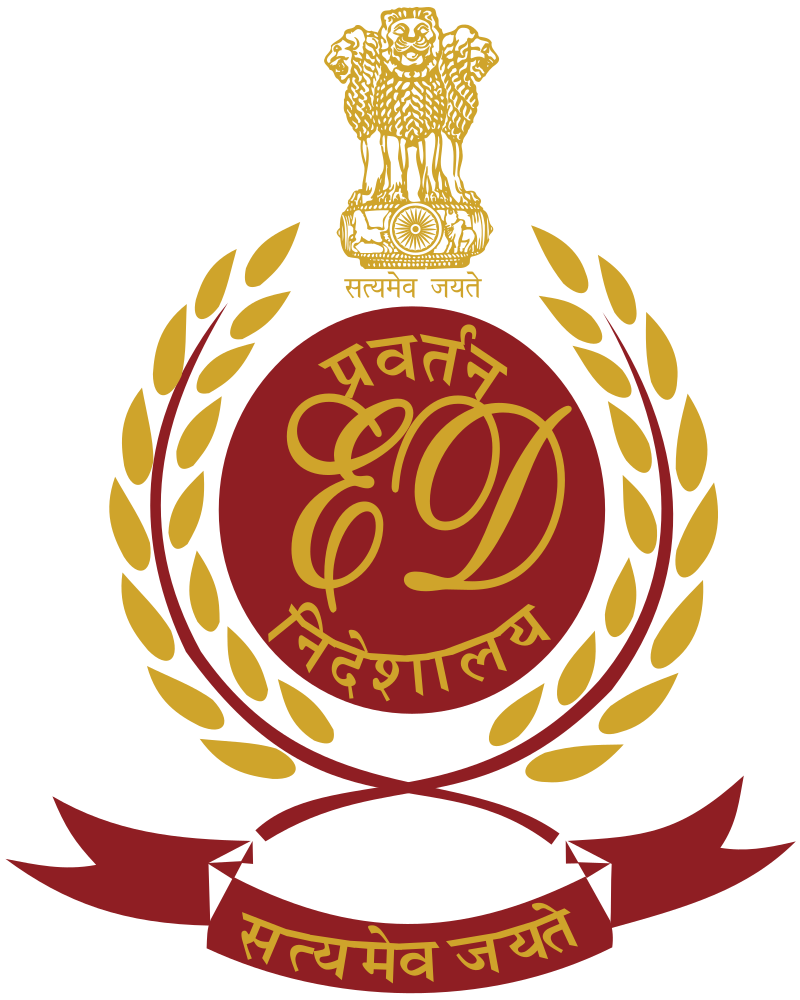The functioning of the Enforcement Directorate
- The Enforcement Directorate (ED) goes back to May 1, 1956, when an ‘Enforcement Unit’ was formed in Department of Economic Affairs, for handling Exchange Control Laws violations under the Foreign Exchange Regulation Act (FERA).
- It is today a multi-dimensional organisation investigating economic offences under Prevention of Money Laundering Act (PMLA), Fugitive Economic Offenders Act, Foreign Exchange Management Act and FERA.
From where does the ED get its powers?

- When proceeds of crime (property/money) are generated, best way to save that money is by parking it somewhere, so one is not answerable to anyone in the country.
- So, there was a need to control and prevent the laundering of money.
- The PMLA was brought in for this reason in 2002 but was enacted in 2005.
- Objective: to prevent parking of the money outside India and to trace out the layering and the trail of money.
- As per the Act, the ED got its power to investigate under Sections 48 (authorities under act) and 49 (appointment and powers of authorities and other officers).
- If money has been laundered abroad, the PMLA court (constituted as per the Act) has the right to send a letter of rogatory under Section 105 (reciprocal arrangements regarding processes) of the Code of Criminal Procedure.
- The said government can then share the documents and evidence needed by the agency.
- The preventive part is to create a deterrent and fear in the minds of people.
At what stage does the ED step in when a crime is committed?
- Whenever any offence is registered by a local police station, which has generated proceeds of crime over and above ₹1 crore, the investigating police officer forwards the details to the ED.
- If the offence comes under the knowledge of the Central agency, they can then call for the First Information Report (FIR) or the charge sheet if it has been filed directly by police officials.
- It is done to find out if any laundering has taken place.
- Difference between the probe of local police and ED officers
- If a stolen amount is used after four years to purchase some properties, then the ill-gotten money is brought back into the market; or if the money is given to someone else to buy properties in different parts of the country, then there is ‘laundering’ of money and the ED will need to step in and look into the layering and attachment of properties to recover the money.
- If jewellery costing ₹1 crore is stolen, police officers will investigate the theft.
- The ED, however, will attach assets of the accused to recover the amount of ₹1 crore.
Other roles and functions of the ED

- The ED carries out search (property) and seizure (money/documents) after deciding that the money has been laundered, under Section 16 (power of survey) and Section 17 (search and seizure) of the PMLA.
- On that basis, the authorities will decide if arrest is needed as per Section 19 (power of arrest).
- Section 50: ED can also directly carry out search and seizure without calling the person for questioning.
- It is not necessary to summon the person first and then start with the search and seizure.
- If the person is arrested, the ED gets 60 days to file the prosecution complaint (charge-sheet) as the punishment under PMLA doesn't go beyond seven years.
- If no one is arrested and only the property is attached, then the prosecution complaint along with attachment order is to be submitted before the adjudicating authority within 60 days.
The PMLA being relatively new, can the ED investigate cases of money laundering retrospectively?
- If an ill-gotten property is acquired before the year 2005 (when the law was brought in) and disposed of, then there is no case under PMLA.
- But if proceeds of the crime were possessed before 2005, kept in cold storage, and used after 2005 by buying properties, then the person is liable to be prosecuted under PMLA.
- Section 3: a person shall be guilty of the offence of money-laundering if such person is found to have directly or indirectly attempted to indulge or knowingly assist a party involved in one or more of the following activities — concealment; possession; acquisition; use; or projecting as untainted property, or claiming as untainted property in any manner.
Exam take away
Prelims take away
- Enforcement Directorate
- PMLA
- Foreign Exchange Regulation Act (FERA).
Mains take away
Q. What are the most common avenues for money laundering in India? Enumerate the measures taken by the government to plug in the legal loopholes to address the problem of money laundering.


